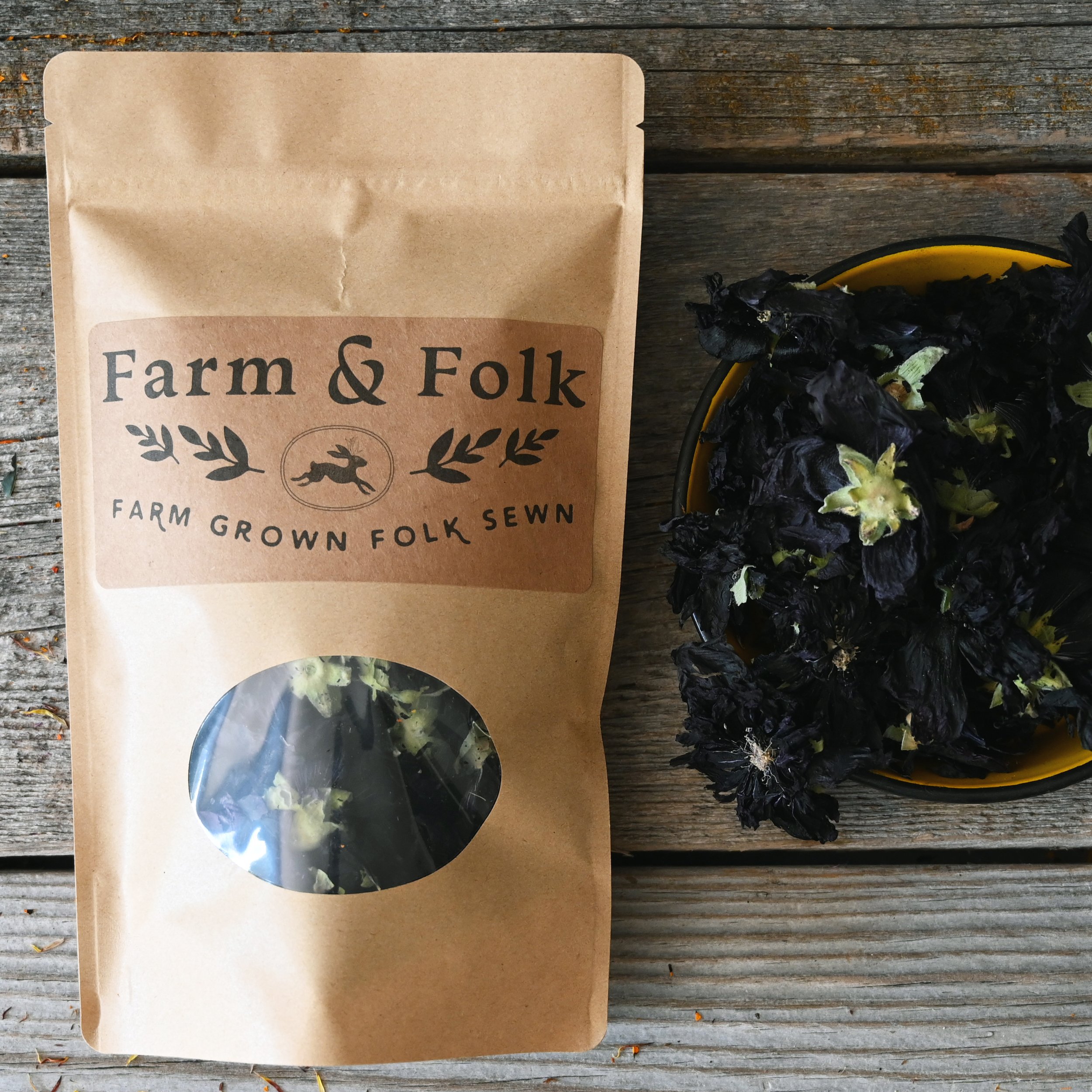Natural Dye Cultivation Series: Double Black Hollyhock
I grew Double Black Hollyhocks (Alcea rosea) for the first time last season so I’m definitely in the early phases of learning as I go with them. One thing I know for certain is that I’ll continue to grow this beautiful variety. The double blooms are a sight to behold! They’re incredibly hearty and robust and I just love everything about them. I’m excited to welcome this variety back this season and become more familiar with it.
Quick Facts:
Biennial
Germination time: 10-14 days
Seed planting depth: 1/4”
Light: full to part sun
Spacing: 12-24”
Days to flower from seed: 2nd summer but sometimes bloom during their first summer
Height & width: 3-6’ x 2-3’
CULTIVATION
Most of the flowers we grow here on our farm are grown as row crops, including the black hollyhocks. If I had a huge amount of seed I might try direct seeding them right into the garden rows in early spring, but when you don’t have much seed it’s more efficient to start the seeds in flats indoors and transplant the seedlings out which is what I did. I started the seeds the first week of April, about 8 weeks before our average last frost date of June 1. Sometime during the first week of June, I transplanted the seedlings out to the garden. They had a pretty slow and rough start getting acclimated—hollyhocks are notorious for getting chewed on by bugs! At least a month passed after transplanting before the plants appeared to be growing and thriving. I might try dusting the plants with diatomaceous earth this season to see if it helps mitigate the bug situation. I sowed the seedlings about 12” apart and this ended up working out pretty well for row crop spacing. If I was planting them in a home garden I might give them more space to sprawl. I’ve read that the plants grow to a height of 4’-6’ and mine were smaller than that—maybe 3 1/2 feet tall. Once the plants became established they grew quickly and then began flowering. At the end of the season, I trimmed the plants back and mulched them. We’ll see if they come back in the spring. Hollyhocks are considered a biennial although they all bloomed in their first summer. I’ve read that when you transplant hollyhocks out as I did it promotes them to flower during their first season so maybe that was the golden ticket? Will they reemerge in the spring? I don’t have much experience with biennials and perennials so I’m learning as I go and will report my findings back here. Regardless I’m planning to transplant out a fresh row in the spring.
HARVESTING
When the blooms began coming on I walked the hollyhock row at least twice per week plucking the ripe flowers. Bees love to crawl deep into the layered petals so you have to be careful harvesting them. I got stung several times last season, even when remembering to watch for the bees. I dry the flowers in my hanging mesh baskets and they dry pretty quickly despite being so big and robust. When they’re completely dry they’re as light as feathers.
A fresh hollyhock flower and a handful of dried blooms
I plan to write a blog post soon about natural dyeing with black hollyhock. Be sure to check our our shop to see all the dye plant seeds and natural dyestuffs we offer! Cheers!




